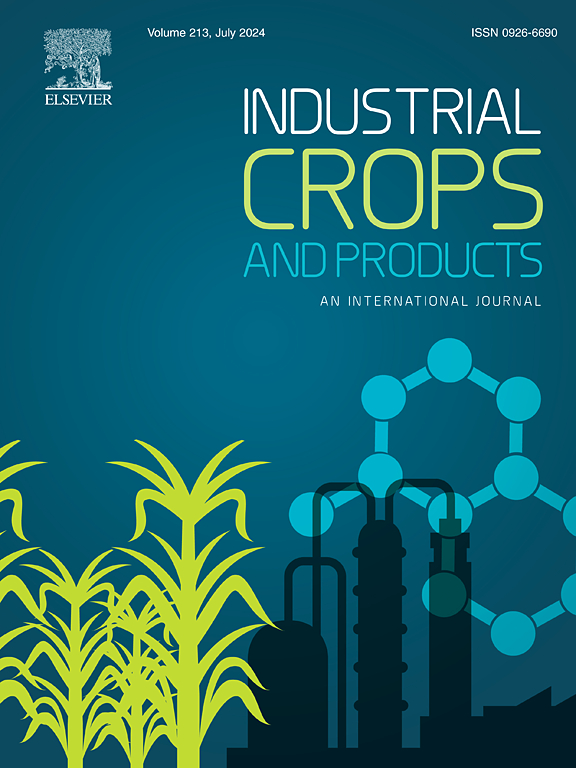Comparison of two flame-retardant treatment methods on bulk hemp fibers: Towards a large-scale viability as a raw material for building insulation
IF 5.6
1区 农林科学
Q1 AGRICULTURAL ENGINEERING
引用次数: 0
Abstract
The high flammability of bio-based insulation materials derived from plant fibers is a major barrier to their widespread use, necessitating the development of effective flame-retardant treatments. This study aims to optimize the treatment of raw hemp fibers by comparing two environmentally-friendly application methods: immersion and spraying. The fibers are treated with a solution containing phytic acid and urea, as biobased sources of phosphorus and nitrogen. The efficiency of the treatments is assessed by characterizing the quantity of phosphorus grafted, the thermal degradation of the fibers by thermogravimetric analysis and their flammability using a mass loss calorimeter. Both application methods are effective, but the spraying method demonstrated superior performance, resulting in a higher level of phosphorus grafted to the fibers and a reduced heat release rate. Additionally, the formation of a protective char layer on the fiber surface helps to limit flame propagation. Notably, this method requires ten times less treatment product than immersion, making it a highly scalable and efficient solution for the industrial production of flame-retardant insulating materials.

求助全文
约1分钟内获得全文
求助全文
来源期刊

Industrial Crops and Products
农林科学-农业工程
CiteScore
9.50
自引率
8.50%
发文量
1518
审稿时长
43 days
期刊介绍:
Industrial Crops and Products is an International Journal publishing academic and industrial research on industrial (defined as non-food/non-feed) crops and products. Papers concern both crop-oriented and bio-based materials from crops-oriented research, and should be of interest to an international audience, hypothesis driven, and where comparisons are made statistics performed.
 求助内容:
求助内容: 应助结果提醒方式:
应助结果提醒方式:


